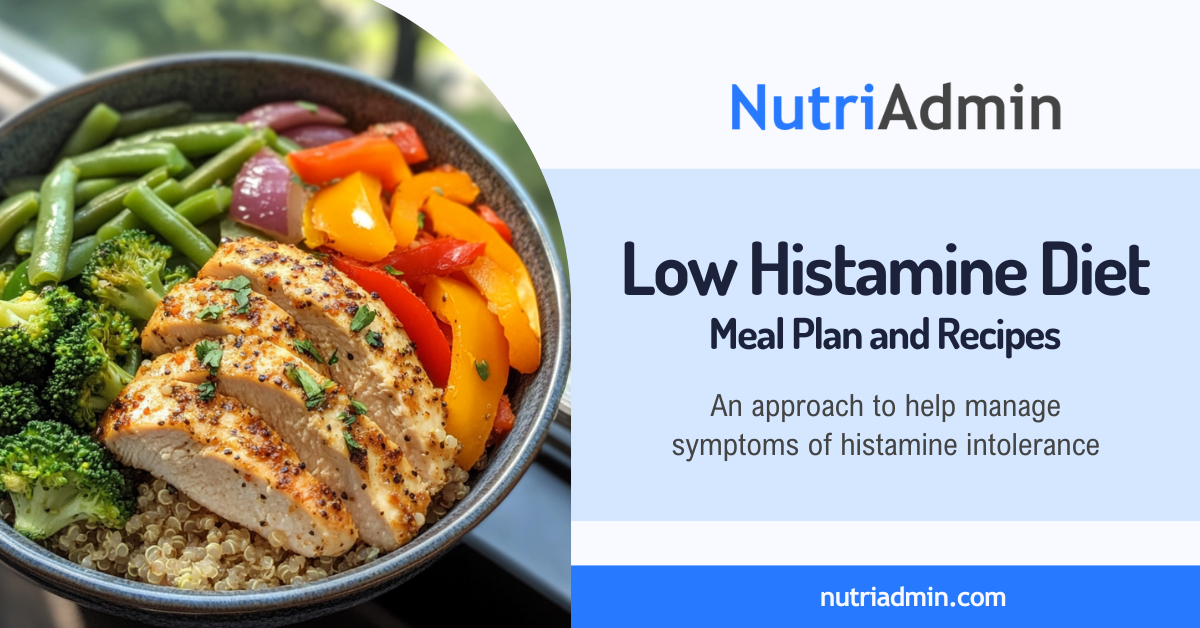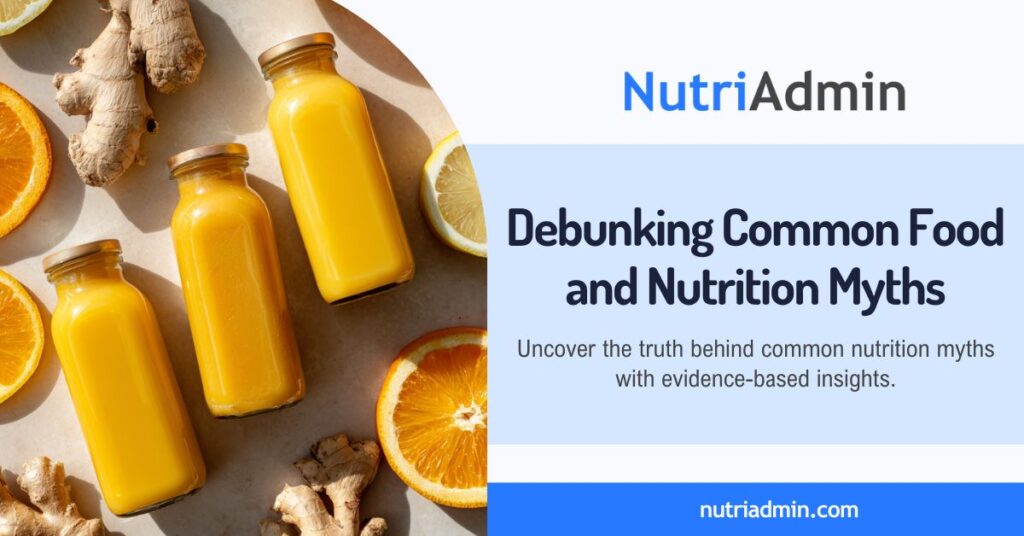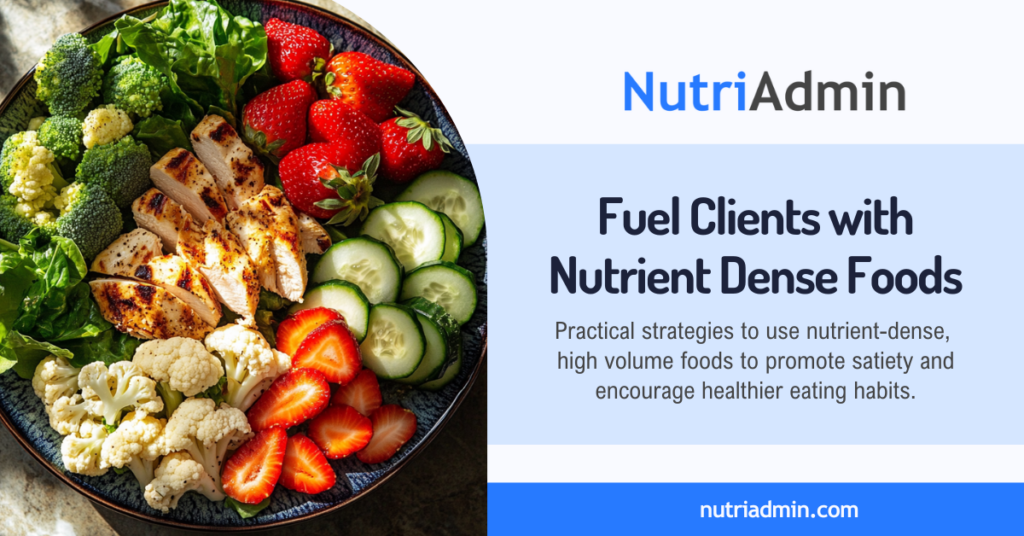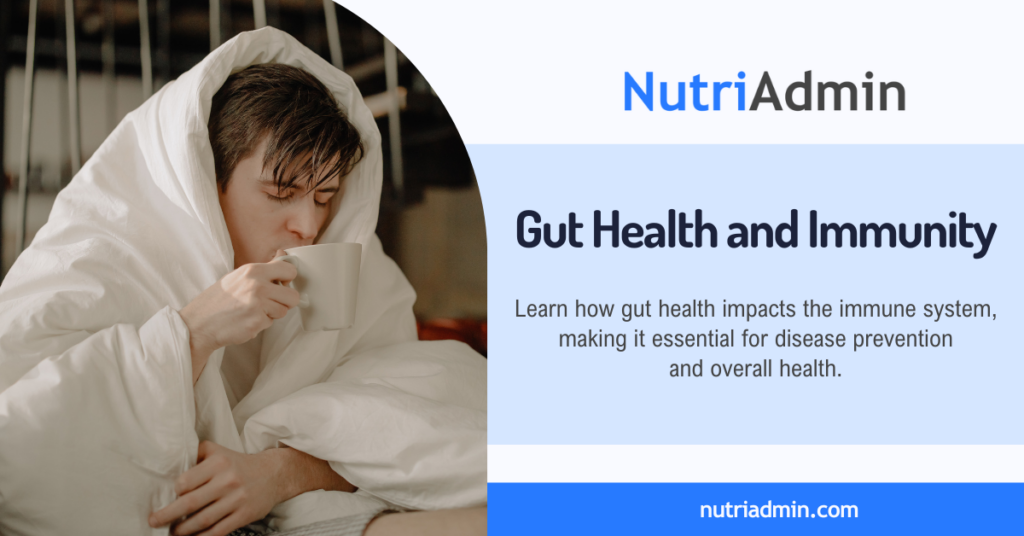A low histamine diet plan can help manage the symptoms of histamine intolerance by reducing the intake of high-histamine foods. However, this doesn’t mean you need to completely eliminate all sources of histamine from your diet. Instead, it would be ideal to identify the foods that trigger your symptoms and to choose options that have lower histamine levels as much as possible.
In this article, we will explore what histamine intolerance is and its signs and symptoms. Additionally, we will discuss different ways to create low histamine diet plans for clients, along with free recipes and food lists.
What is histamine?
Histamine is a biogenic amine that plays a crucial role in the immune system, specifically in modulating allergic reactions. It also regulates stomach acid and functions as a neurotransmitter.
It’s involved in local immune responses and helps regulate the gut’s physiological functions. During allergic reactions, histamine is released by mast cells and basophils, leading to symptoms like itching, swelling, and redness.
It’s also vital in the body’s response to injury and inflammation. In the gastrointestinal tract, it aids in the secretion of gastric acid, which is necessary for digestion. Overall, histamine is essential for various bodily functions, but excessive release can lead to allergic reactions and other health issues.
Histamine Intolerance
Histamine intolerance is a condition characterized by excessive histamine accumulation, making it difficult for the body to eliminate it. This can result in symptoms that resemble allergic reactions, such as headaches, digestive issues, hives, and more.
It often occurs due to a deficiency in the enzyme diamine oxidase (DAO), which breaks down histamine in the gut. Managing histamine intolerance typically involves following a low histamine diet and avoiding foods high in histamine.
Signs and Symptoms of Histamine Intolerance
The symptoms of histamine intolerance can differ among individuals. Common symptoms include:
- itching
- hives
- sneezing
- watery eyes
- rhinitis
- headaches
- abdominal pain
- flatulence
- diarrhea
- tachycardia
- hypotension
Testing for Histamine Intolerance
Testing for histamine intolerance can be difficult because its symptoms often overlap with other conditions, and no standardized diagnostic method is available. Currently, there are no specific tests that can definitively diagnose histamine intolerance.
However, research suggests that monitoring the levels and activity of the DAO enzyme— which tends to decrease in individuals with this condition—may be a helpful indicator. Despite this potential, a clear reference value for diagnosing histamine intolerance is still not established.
- Serum diamine oxidase (DAO)
- Skin prick test
- Histamine challenge test
- Fecal histamine levels
- Genetic testing
Histamine in Food
Histamine in foods can significantly impact individuals with histamine intolerance. Some foods naturally contain higher levels of histamine, while others can cause its release in the body. Here’s a breakdown of high and low histamine foods:
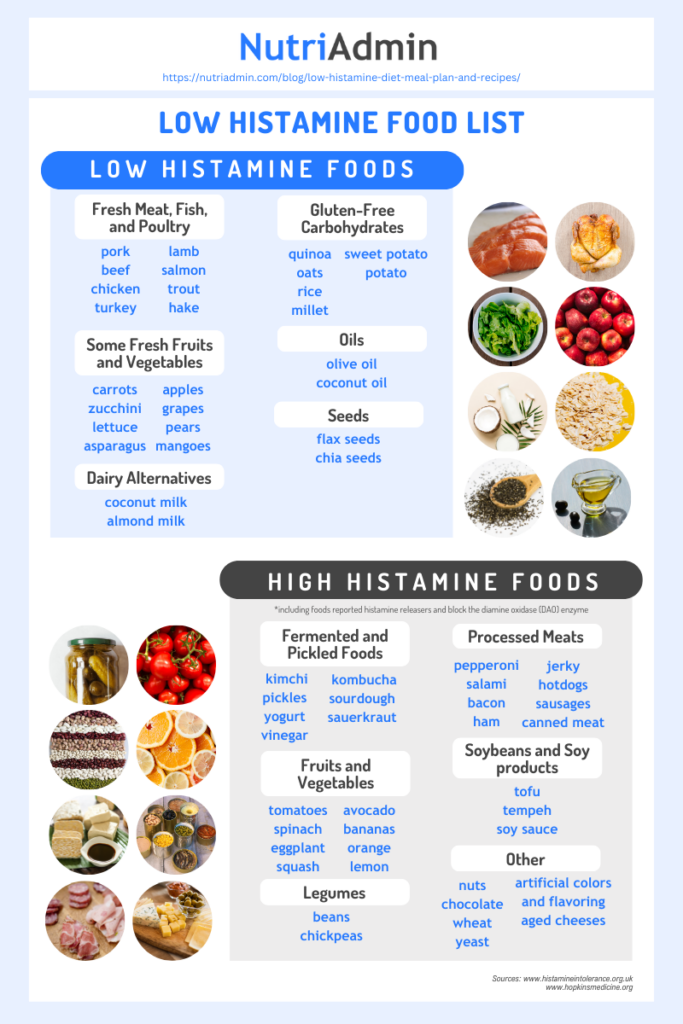
High Histamine Food List
The following foods are known for their higher histamine content or their ability to release histamine in the body.
| FOOD PRODUCTS | EXAMPLES |
|---|---|
| Aged Cheeses | parmesan, gouda, brie, blue cheese |
| Alcoholic Beverages | wine, beer |
| Fermented and Pickled Foods | sauerkraut, kimchi, pickles, yogurt, vinegar, kombucha, sourdough |
| Processed Meats | salami, pepperoni, bacon, ham, hotdogs, sausages, jerky, canned meat |
| Vegetables | tomatoes, spinach, eggplant, squash |
| Citrus Fruits | orange, lemon, lime, grapefruit, tangerine |
| Fruits | pineapple, avocado, bananas, plum, passion fruit, kiwi |
| Soybeans and Soy products | tofu, tempeh, soy sauce |
| Legumes | beans, chickpeas, soybeans |
| Nuts | peanuts, walnuts, cashews |
| Fish and Seafood | tuna, mackerel |
| Other | chocolate, wheat, yeast, artificial colors and flavoring, chili powder, cinnamon, cloves |
Low Histamine Food List
The histamine level in food can increase as it spoils, so it’s important to consume fresh food whenever possible. Additionally, cooking methods can also affect histamine levels. For instance, cooking can reduce histamine in fresh meats but won’t eliminate it in aged or fermented products.
These foods are generally considered safe for those managing histamine intolerance:
| FOOD ITEMS | EXAMPLES |
|---|---|
| Fresh Meat and Poultry | chicken, turkey, lamb |
| Fresh Fish | salmon, trout, hake |
| Dairy Alternatives | coconut milk, almond milk |
| Most Fresh Fruits | apples, pears, grapes |
| Most Fresh Vegetables | carrots, zucchini, lettuce |
| Gluten-Free Grains | rice, quinoa, oats |
| Oils | olive oil, coconut oil |
| Seeds | flax seeds, chia seeds |
Creating Low Histamine Diet Meal Plans and Recipes
If advised by a health professional or dietitian, a client with histamine intolerance should consider following a low-histamine diet plan. Since histamine intolerance differs among individuals and can change over time, it is essential to customize low-histamine diet meal plans to meet each person’s needs.
Making Low Histamine Diet for Clients
There are several approaches to creating meal plans for a low histamine diet. These methods can vary in complexity and cost, offering options for both free and paid resources.
Here are some methods to help you create low-histamine diet plans for clients.
- Learning how to create effective meal plans from scratch.
- Creating a collection of customizable meal plan templates that can be tailored for different clients.
- Using free meal plans from reliable sources and adapting them to meet individual client needs and preferences.
- Finding inspiration through meal plan ideas.
- Using ChatGPT but with certain limitations.
- Investing in a professional meal planning software solution.
Free Tools vs. Meal Planning Software
| Advantages | |
|---|---|
| Free Tools | – Cost-Effective: No financial investment required. – Accessibility: Often easily accessible online or through apps without subscriptions. – Flexibility: Can be tailored to individual preferences without limitations imposed by software. – Simple and Intuitive: Basic tools may have user-friendly interfaces ideal for beginners. – No Commitment: Users can try various meal plans and formats without worrying about contracts. |
| Professional Meal Planning Software | – Advanced Features: Often includes features like nutritional tracking, shopping lists, and recipe suggestions. – Customization: Tailored meal plans based on dietary needs, preferences, and restrictions. – Time-Saving: Automated tools can make the meal planning process quicker and more efficient. – Nutritional Analysis: Provides detailed nutritional information for each meal. – Customer Support: Typically offers dedicated support for technical inquiries. |
| Disadvantages | |
|---|---|
| Free Tools | – Limited Features: May lack advanced features like nutritional analysis or recipe suggestions. – Time-Consuming: Manual planning can be labor-intensive and may require more research. – Less Customization: Might not accommodate specific dietary restrictions as effectively. – No Automated Updates: Users have to manually input changes or updates in diets or preferences. – Potential for Inaccuracy: Manual entry can lead to errors in food quantities or nutritional information. |
| Professional Meal Planning Software | – Cost: Requires a financial investment, which may not be feasible for everyone. – Learning Curve: Some software can be complex and may require time to learn how to use it effectively. – Dependence on Technology: Requires reliable internet access and can be affected by software bugs or downtimes. |
Meal Planning Software for Low Histamine Diet
With many technological advancements today, different meal-planning software is available, each with unique features. NutriAdmin, an all-in-one nutrition software, includes advanced features that can help you create a personalized low histamine diet meal plan in just 60 seconds!
It allows you to set parameters such as energy, macronutrient requirements, number of meals, maximum preparation time for recipes, and specific diets, such as the low histamine diet. You can exclude specific foods that your clients may be allergic to, unable to tolerate, or simply do not like. Additionally, you can select available cooking equipment, cuisines, and more.
After creating an individualized low histamine diet plan in NutriAdmin, you can share a professional downloadable meal plan featuring your branding, nutritionist-approved recipes, automatic nutritional analysis, and a shopping list.
You can download a sample low histamine diet meal plan with recipes from NutriAdmin below.
Low Histamine Recipes
If you’re looking for meal plan recipe ideas, NutriAdmin has a comprehensive recipe management feature. It offers a database with thousands of recipes that have been vetted by a nutritionist, which you can incorporate into your meal plans. Additionally, you can add your own recipes, use recipes generated by AI, or import recipes from various websites.
You can use the low histamine recipes from NutriAdmin’s recipe database provided below.
Summary
Histamine is a biogenic amine essential for immune system function, allergic responses, and stomach acid regulation. When the body cannot effectively break down histamine due to diamine oxidase (DAO) enzyme deficiency, histamine intolerance occurs. This leads to symptoms like itching, hives, headaches, and digestive issues.
Foods high in histamine include aged cheeses, fermented products, processed meats, certain vegetables (tomatoes, spinach), and specific fruits (citrus, avocado). People with histamine intolerance should opt for low histamine alternatives such as fresh meats, fresh fish, dairy alternatives, most fresh fruits and vegetables, and gluten-free grains. Food freshness is crucial since histamine levels increase as food ages or spoils.
Creating a low histamine diet plan requires customization based on individual needs and symptoms. Focus on fresh ingredients and appropriate cooking methods that minimize histamine content. Meal planning can be simplified through various tools, from free resources to professional software, helping ensure a balanced diet while avoiding trigger foods.
